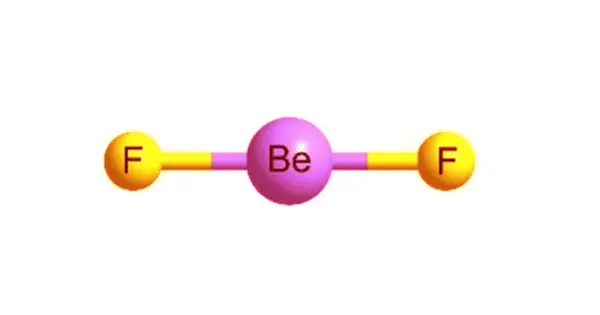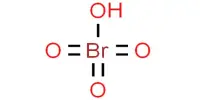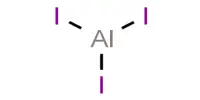Beryllium fluoride is an inorganic chemical with the formula BeF2. It is the fluoride salt of beryllium. This whitish solid is the primary precursor for the production of beryllium metal. Its structure is similar to that of quartz, although BeF2 is very soluble in water. It is the beryllium compound with the most ionic character (owing to fluorine’s strong electronegativity), but many chemists do not regard it as ionic.
Beryllium fluoride is utilized in biochemistry, particularly protein crystallography, since it binds in some of the same ways that phosphate does. ADP and beryllium fluoride bind to ATP sites and impede protein function, allowing proteins to crystallize in the bound condition.
Properties
Beryllium fluoride exhibits unique optical characteristics. It has the lowest refractive index for a solid at room temperature of 1.275 in the form of fluoroberyllate glass. It has the lowest dispersive power for a solid, at 0.0093, and the lowest nonlinear coefficient, at 2 × 10-14.
- Chemical formula: BeF2
- Molar mass: 47.01 g/mol; hygroscopic
- Appearance: colorless, glassy lumps
- Density: 1.986 g/cm3
- Melting point: 554 °C (1,029 °F; 827 K)
- Boiling point: 1,169 °C (2,136 °F; 1,442 K)
- Solubility in water: very soluble
- Solubility: sparingly soluble in alcohol
Structure and bonding
It exists as a glass in the solid state, having four-coordinate Be(2+) tetrahedral centers and two-coordinate fluoride centers. The structure of solid BeF2 is similar to that of cristobalite. Be2+ centers are four-coordinate and tetrahedral, whereas fluoride centers are two-coordinate. The Be-F bond lengths are around 1.54Å. As a gas, it has a linear triatomic structure, while as a liquid, it has a fluctuating tetrahedral structure. BeF2 can have similar structures to SiO2. An analogy occurs between BeF2 and AlF3: both adopt extended structures at low temperatures.
Gas and liquid BeF2
With a Be-F distance of 143 pm, gaseous beryllium fluoride has a linear structure. BeF2 has a vapor pressure of 10 Pa at 686 degrees Celsius, 100 Pa at 767 degrees Celsius, 1 kPa at 869 degrees Celsius, 10 kPa at 999 degrees Celsius, and 100 kPa at 1172 degrees Celsius.
Liquid beryllium fluoride’molecules’ have a changing tetrahedral structure. Furthermore, near the freezing point, the density of liquid BeF2 falls as Be2+ and F ions begin to coordinate more strongly with one another, resulting in the growth of voids between formula units.
Production
The processing of beryllium ores generates impure Be(OH)2. This material reacts with ammonium bifluoride to give ammonium tetrafluoroberyllate:
Be(OH)2 + 2 (NH4)HF2 → (NH4)2BeF4 + 2 H2O
Tetrafluoroberyllate is a robust ion, which allows its purification by precipitation of various impurities as their hydroxides. Heating purified (NH4)2BeF4 gives the desired product:
(NH4)2BeF4 → 2 NH3 + 2 HF + BeF2
In general the reactivity of BeF2 ions with fluoride are quite analogous to the reactions of SiO2 with oxides.
Uses
Beryllium fluoride is employed in biochemistry, particularly protein crystallography, since it binds in human tissues in some of the same ways that phosphate does. ADP and beryllium fluoride tend to bind to ATP sites and block protein function, allowing proteins to crystallize in the bound state. Beryllium fluoride is a fundamental component of the preferred fluoride salt mixture used in liquid-fluoride nuclear reactors.
Typically, beryllium fluoride is combined with LiF to generate a base solvent into which uranium and thorium fluorides are added. Beryllium fluoride is chemically extremely stable, and LiF/BeF2 mixes have the lowest melting points and the highest neutronic characteristics of any fluoride salt combination suitable for reactor use.















